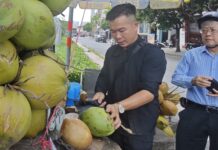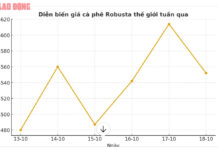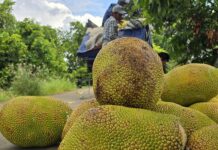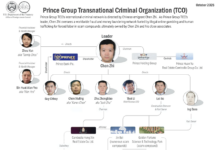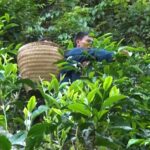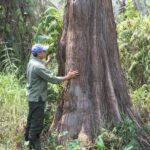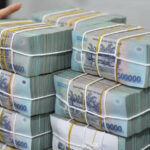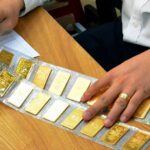Falling in Love with the Golden Tea Flower in the Land of the Great Forest
In 2008, Nguyen Ngoc Quynh (born in 1979 in Bac Giang province) graduated with a degree in Food Technology from Nha Trang University with big dreams. To realize his dream of becoming a food engineer, he left his hometown and wandered through many provinces and cities in search of job opportunities.
In 2012, fate led him to the sunny and windy land of Village 12 (Vu Bon commune, Krong Pak district, Dak Lak province) – where he decided to devote his life to the golden tea flower.
With a gentle smile, Quynh shared: “After arriving in Vu Bon commune, I followed the local people to the mountains to explore the beauty of the Dak Lak great forest. But at that time, there were only barren hills left. Every day, the villagers also went up to burn the forest for their fields.”
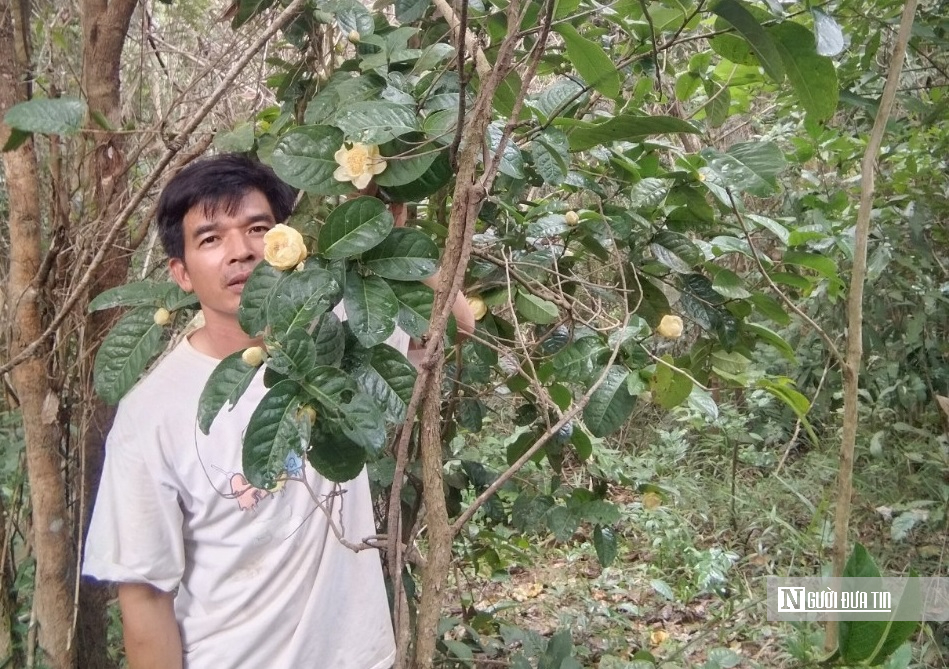
The golden tea flower trees that Quynh has been taking care of for many years.
On one of his wanderings to a burnt-out mountain, Quynh came across a green tree with yellow flowers, buds, and a trunk the size of a calf, about 3 meters tall, with many dried fallen flowers under it.
“I asked the people who accompanied me, but no one knew what kind of tree it was. They only remembered that this type of tree used to grow a lot in the forest and was used by the locals for various purposes. Many people would take the leaves of this tree to feed their goats or boil the water to bathe children with scabies and boils. Some even used the leaves to make tea or cook soup… However, during the process of making fields, the locals cut down all the trees,” shared Quynh.
After that trip to the forest, Quynh decided to hire six local people to go into the forest to dig up and bring back that green tree to plant and take care of it, hoping to preserve a bit of the remaining great forest. The tree thrived and bloomed profusely. Many locals came to ask for its leaves to use as medicine.
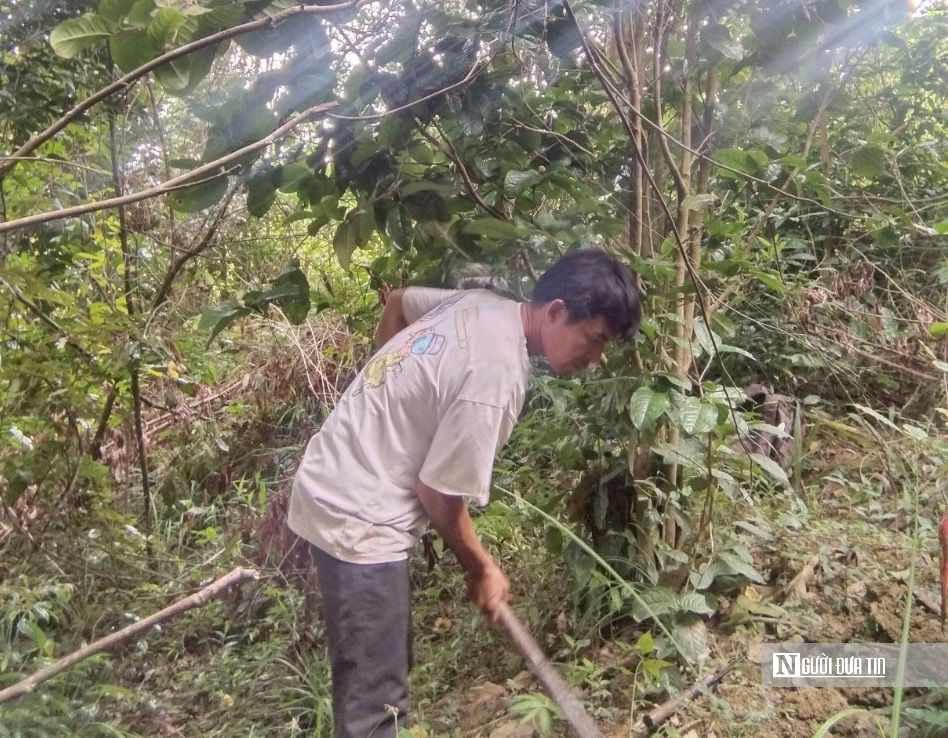
Quynh tends to the precious tea trees every day.
Based on the information provided by the locals, Quynh boiled the leaves of this tree to make tea and found that it did not cause stomachaches when hungry or insomnia like other types of tea. He also used the flowers to make honey to treat coughs and soaked the leaves in alcohol, resulting in a sweet and fragrant liquor…
His intuition told him that this could be a valuable medicinal plant worth preserving, so he continued to explore the untouched forests to find and transplant more of these green trees to his garden.
Many people thought he was crazy and doing the opposite of what everyone else was doing. However, with his strong love for nature, Quynh persevered and found ways to overcome the challenges, such as breeding earthworms under the trees to help them regenerate and grow better.
Later, Quynh posted pictures of this tree on social media to ask his friends and other plant enthusiasts about it. During this process, Dr. Luong Van Dung, a lecturer at Dalat University, contacted him to inquire about the tree.
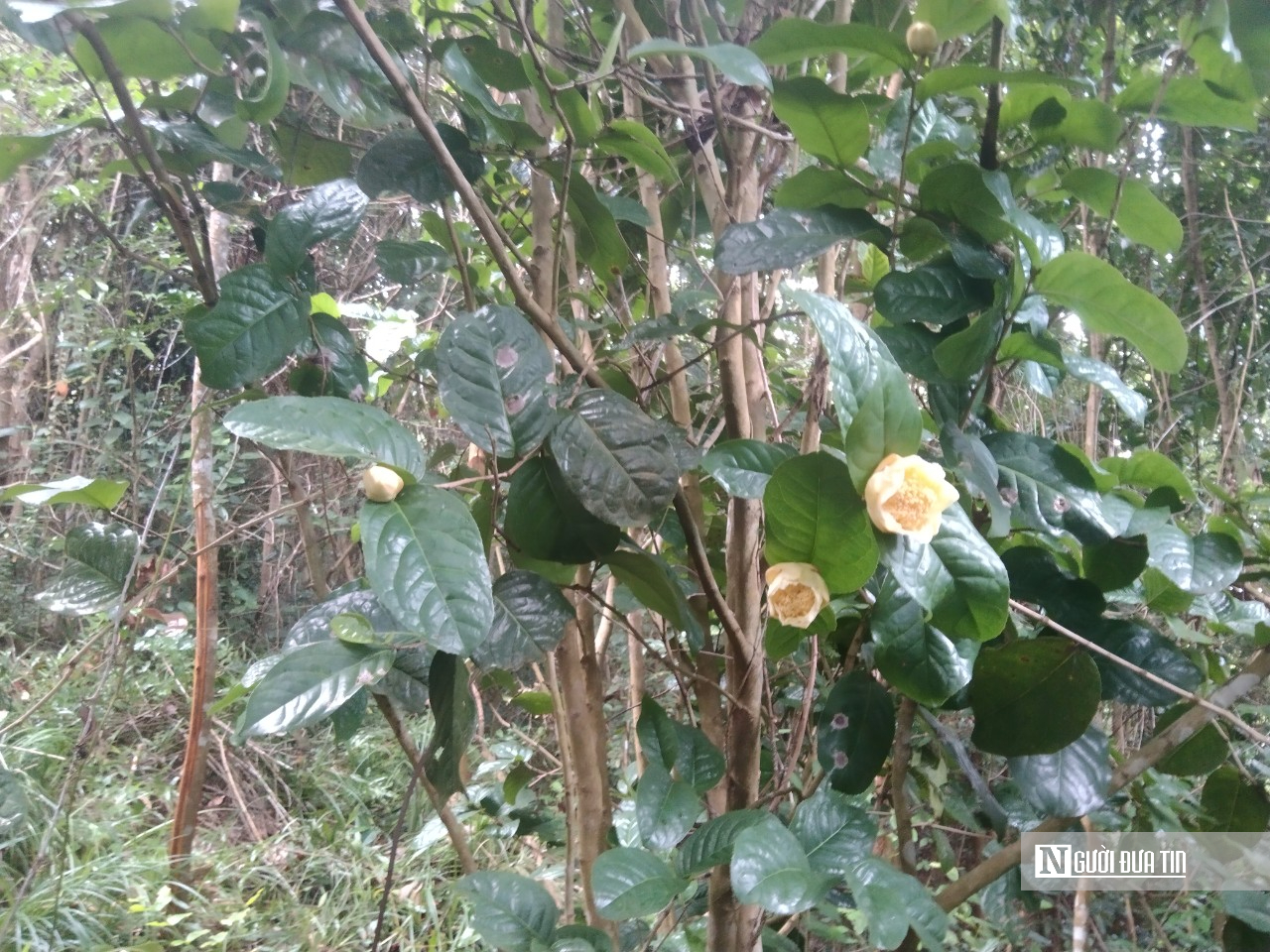
The golden tea flower trees thriving under the regenerated forest canopy.
In 2020, Dr. Luong Van Dung and his colleagues from Dalat University visited Vu Bon commune – where Quynh was preserving the green trees he had transplanted from the forest – to study and collect flowers, fruits, and leaves for analysis.
Through the research of these scientists, in 2022, the tea variety discovered by Quynh was recognized as a new species of golden tea flower, an endemic plant of Dak Lak, published in the Journal of Science of the University of Dalat, with the scientific name Camellia Quynhii (Vietnamese name: Tra Quynh). This was an important step in the journey to conserve and promote the value of this unique tea variety.
Transforming Golden Tea Flower into an OCOP Product
Not content with his initial success, Quynh has invested hundreds of millions of dong over the years to hire local people to search for and bring back golden tea flower trees.
Over the past decade, he has successfully transplanted 3,000 golden tea flower trees over an area of 2 hectares, combining them with native plants in Dak Lak.
His passion for conservation continues to drive him to research and explore the potential of this precious tea tree.
“After discovering the golden tea flower, I applied my professional knowledge, combined with the experience of the local people, and learned from tea experts to process tea bags named ‘Golden Tea Flower’,” shared Quynh.
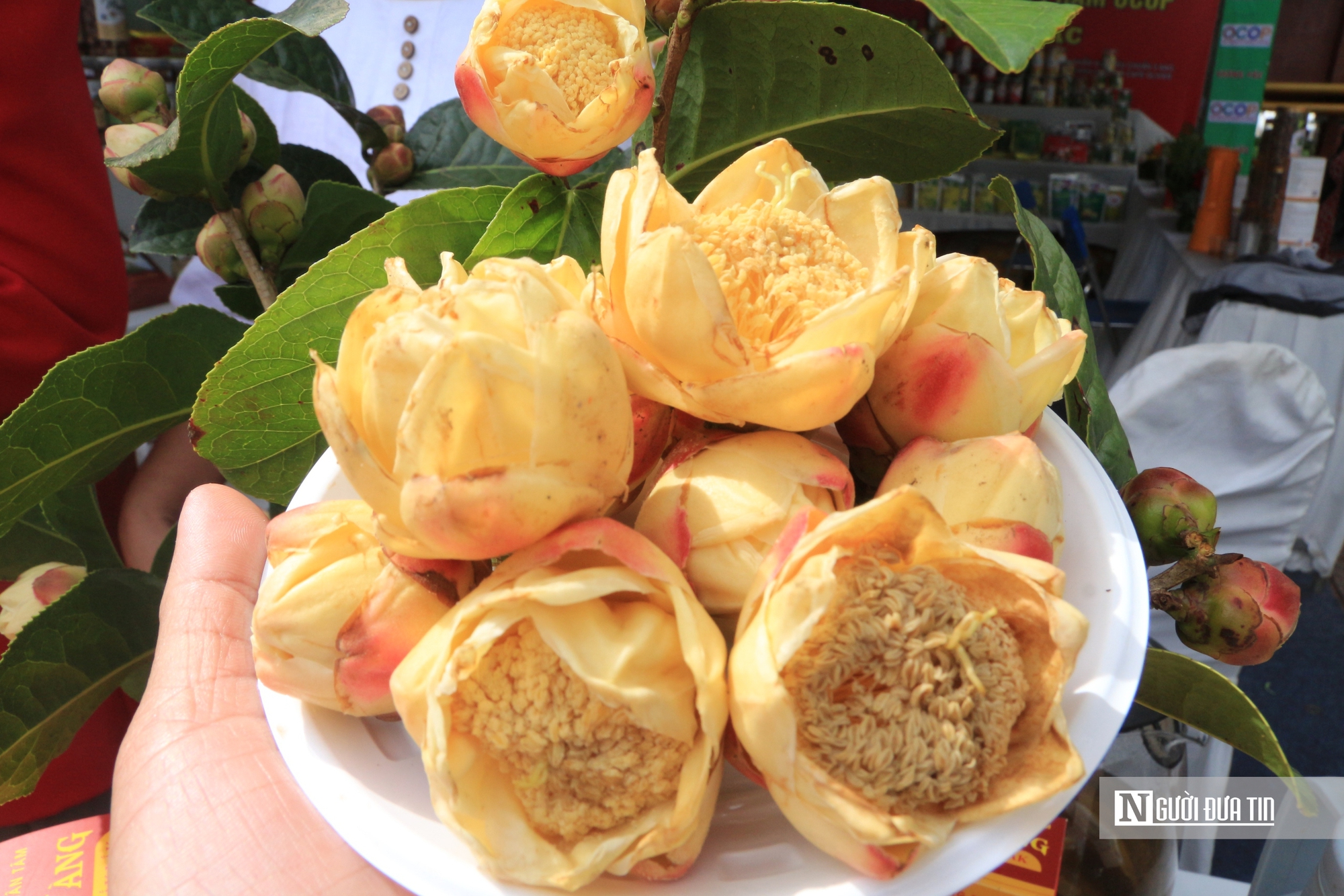
Golden tea flowers being harvested to make tea bags.
To obtain the raw material for processing, from March to June every year, he harvests the leaves of the golden tea flower. According to him, this is the time when the leaves are mature and have accumulated energy from the old tea trees, and the weather is also favorable for harvesting.
At the end of 2023, his “Golden Tea Flower” product participated in the OCOP product ranking of Krong Pak district and was recognized as a 3-star OCOP product in early 2024. He is currently selling this product in the market for about VND 2 million/kg.
“To make this tea, I have to go through 11 stages. Among them, the most important and challenging steps are fermentation and mold treatment. Fermentation creates the unique flavor, while mold can be harmful to health,” said Quynh.
The profit from selling tea bags not only helps him maintain his business but also provides funds to continue hiring people to search for ancient golden tea flower trees for conservation and development.
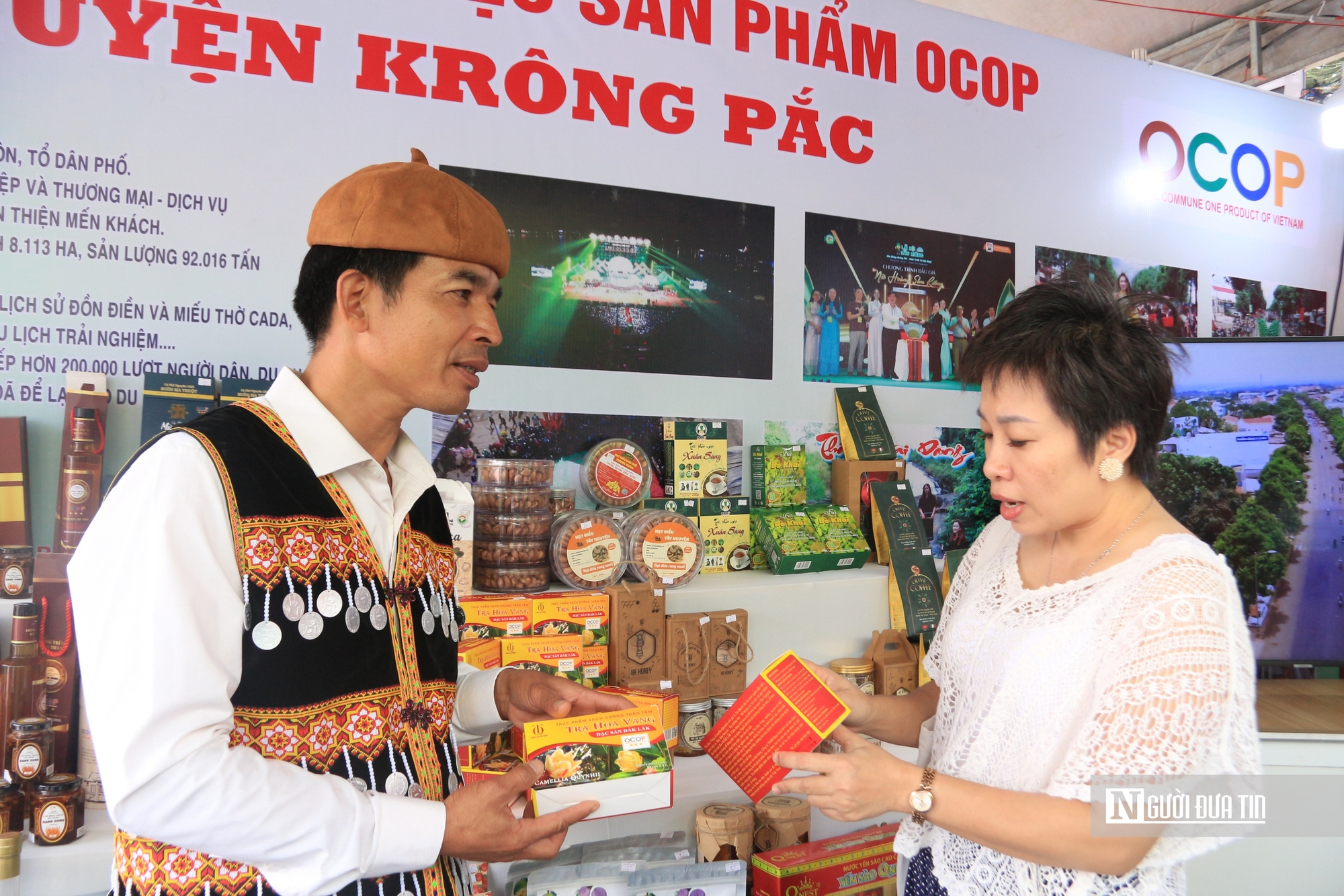
Quynh introduces “Golden Tea Flower” tea bags at trade fairs.
“Currently, in the Central Highlands, people are focusing on crops such as durian, coffee, and rice, while the golden tea flower is being neglected. Therefore, the raw material for processing tea bags from the golden tea flower is still limited.
Through my actions, I hope to spread awareness and call on people to join me in preserving this precious gene and developing and propagating the golden tea flower. The golden tea flower can be intercropped with other crops such as durian, coffee, pepper, cashew, and avocado. This creates a diverse ecosystem, contributing to environmental protection and providing additional income for local people,” Quynh shared.
In addition, he also hopes that organizations and individuals will cooperate and support the establishment of a nursery for golden tea flower seedlings to preserve the native species and provide them to local people to replicate the model.
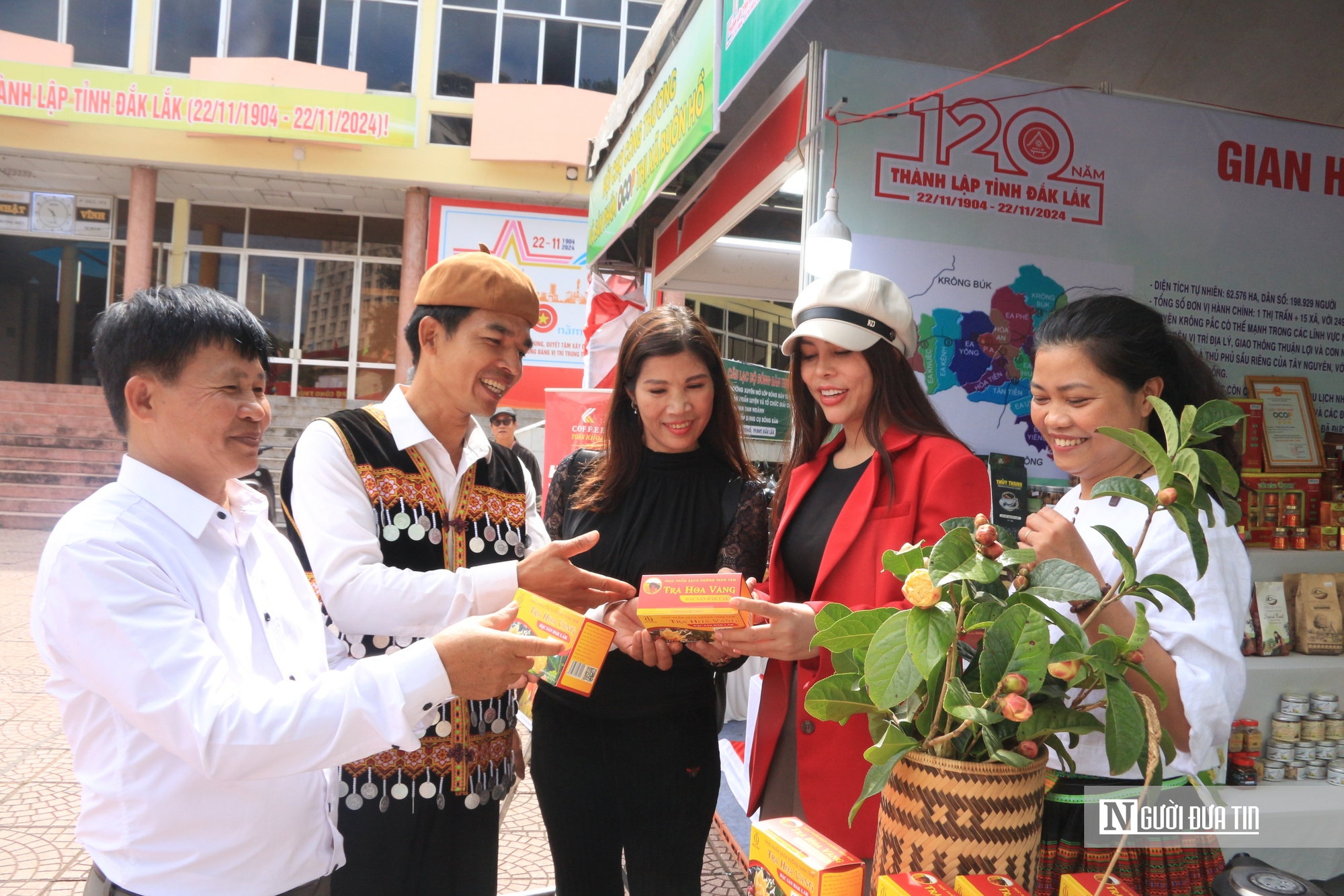
Quynh (2nd from left) introduces the “Golden Tea Flower” product.
Mr. Tran Van Sau, Chairman of Vu Bon Commune People’s Committee, said that the golden tea flower has high economic value. Currently, in the commune, only Quynh has succeeded in preserving it.
The tea bag product made from the golden tea flower is also the only OCOP product of the locality so far. Initially, this model has contributed to increasing the income of Quynh’s family and creating jobs for some local laborers.
In an interview with Nguoi Dua Tin, Dr. Luong Van Dung from Dalat University said: “Tra Quynh is a rare species of golden tea flower. Scientifically, Tra Quynh is an endemic plant of Vietnam and has only been recorded in Vu Bon commune, Krong Pak district, Dak Lak province. It has not been found in any other region in Vietnam or the world. Notably, Dak Lak has a dry climate, which makes the presence of the golden tea flower even more unusual. Quynh is the first person to discover this type of tea. After seeing the pictures of the golden tea flower that Quynh posted on social media, we went directly to Vu Bon commune to survey, evaluate, and collect samples for analysis of its compounds. We also initiated the process of announcing this new tea species in the Journal of Science of the University of Dalat, with the scientific name Camellia Quynhii.”
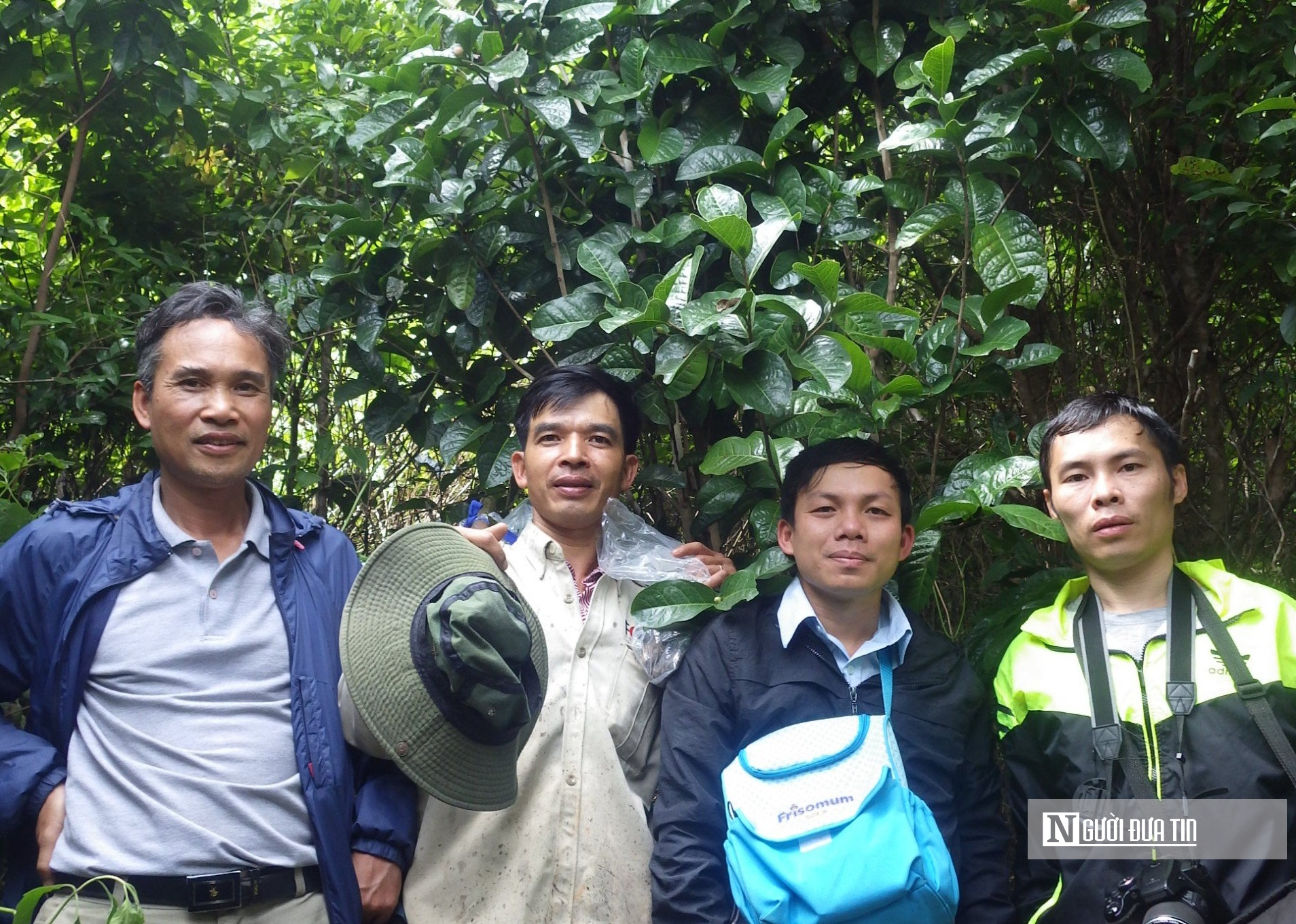
Dr. Luong Van Dung (first on the left) surveying Quynh’s golden tea flower conservation model.
According to Dr. Dung, in terms of its value, in-depth research and evaluation are needed. However, based on the analysis of its compounds, it can initially be affirmed that this plant has medicinal potential. This tea variety has antioxidant, digestive support, and even insomnia-relieving properties.
Based on the above information, Dr. Dung affirmed that Tra Quynh is an endemic plant and needs to be conserved. However, currently, very few people know about this tea tree. Therefore, management agencies need to get involved and consider it a conservation task of the province and locality to create a basis for future propagation and processing. At the same time, this tea variety should be included in programs to develop more diverse products.
The Elusive Art of Crafting the Perfect Tea: Navigating the Delicate Balance of Shan Snow Tea’s Uncertain Harvests and Market Fluctuations
It is the middle of the third harvest season for Shan Tuyet tea trees in Hoang Su Phi, Ha Giang. The harvest has been affected by heavy night-time rainfall and intense daytime sunshine, which have negatively impacted the growth and germination of the tea trees, resulting in reduced yield and lower prices.

